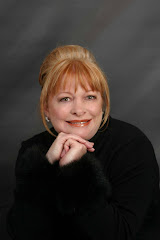The 7 Habits
of Highly Effective Investors
These are the
basics of running your financial life.
In a recent study, just 8 percent of college students taking a recent survey
gave themselves an A for how well they manage their finances. In a larger, 2014
survey of U.S. adults, 18 percent gave themselves the top grade for their personal
finance knowledge.
Many people
get stressed even thinking about managing their money, seeing it as just too
complicated. But Harold Pollack, a University of Chicago professor, famously
fit the basics of good personal finance on an index card.
Here are
seven simple ways to increase the odds of getting in and staying in good
financial shape.
Once you’ve
got these covered, you can explore investment opportunities.
1. Save
early, and automatically
The point is
just to get in the habit of saving. Even if you start small, it’s a start. And
seeing your money grow can be very motivating.
2. Expect
financial emergencies
About 47
percent of respondents wouldn’t be able to cover an emergency $400 expense
without selling something or borrowing money. So when you start saving, you may
want to set aside money for an emergency fund before saving for retirement.
That’s because, in a financial emergency, many people just tap into a
retirement fund early and pay a penalty.
3. Set an
asset allocation, and diversify
Asset
allocation is an investor’s most important decision, said Bernstein. Research
by numerous finance professors has shown that the vast majority of returns over
time come from asset allocation rather than picking the right security or the
right time to invest in the market.
One rough
rule of thumb Bernstein uses for setting a stock-bond allocation is that your
age should equal your bond allocation. A 50-50 or 60-40 split is a good
starting point, he said, but then you need to figure out your risk tolerance
and tweak your portfolio to reflect that.
4. Keep fees
low
With many
people expecting future stock market returns to be muted, it’s more important
than ever to keep fees low. Situations in which a retirement saver gets
conflicted advice—meaning an adviser gets fees and commissions if the client
buys a particular product—lead to returns roughly 1 percentage point lower per
year, according to a report from the White House Council of Economic Advisers.
The council estimated the aggregate annual cost of conflicted advice on Superannuation
assets at about $17 billion a year.
For most
people, keeping investments simple is the most cost-effective strategy. Warren
Buffett is a longtime fan of investing in low-cost index funds, and in his 2013
Berkshire Hathaway shareholder letter, Buffett shared the advice he gave to his
estate’s trustee:
5. Use a qualified
adviser
Late-night
television isn’t the place to find financial wisdom.
6. Spend less
than you earn
Spending more
than they earn is a pattern for 23 percent of millennials and 19 percent of Gen
Xers, according to a 2014 study by the Financial Industry Regulatory
Authority’s Investor Education Foundation. So it’s not surprising that only
about a third of each demographic has an emergency fund in place.
Part of what
can make it tough to build an emergency fund is lifestyle creep. As we
(hopefully) earn more, we often ratchet up our spending—we upgrade phones or
cars, or take fancier vacations—rather than increasing our superannuation contributions by 1 percent, or setting a
higher amount of savings to automatically be taken out of pay.
7. Maximise
employee benefits
Ensure your
KiwiSaver contributions match those of your employers.
Source:
Bloomberg






























